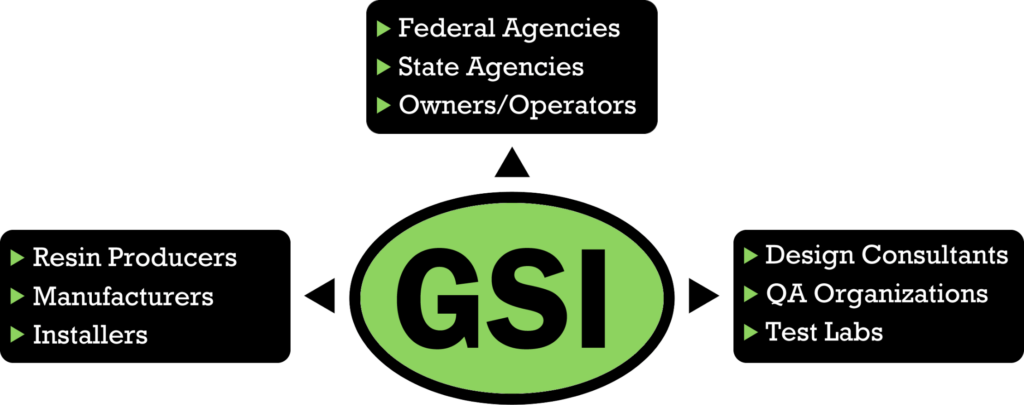The Geosynthetic Institute (GSI) will sponsor a webinar, “Geosynthetics Used In Paved And Unpaved Roads” on December 7 from 11:30 a.m. to 1 p.m. EDT. Geosynthetic Materials Association (GMA) member companies and their employees receive discounted rates on all GSI webinar and short course registrations.

Beginning in the 1930s, geotextiles and then geogrids have been used in unpaved and paved roads for the purposes of reduced stone base thicknesses and/or improved serviceability. For use as unpaved road reinforcement, the theory is well developed such that benefit/cost of using geotextiles or geogrids can be assessed. This application is very well positioned and accepted. For paved road stabilization, a number of geogrid design methods will be reviewed focusing on increased trafficability. Also, for paved roads under the assumption of lateral reinforcement, an observational approach to mitigate longitudinal cracks will be presented. Geotextiles have been used as separators to keep the crushed stone base course from mixing with the soil subgrade. Both geotextiles and geogrids will be described insofar as prevention of reflective cracks through asphalt overlays. Both theory and field behavior are presented.
Learning objectives
This webinar focuses on a comprehensive presentation of the use of geosynthetic applications with respect to unpaved and paved roads. Both geotextiles and geogrids are involved depending on exactly where in the roadway cross-section they are placed. Of course, the quality of the soil subgrade is significant and its role will be described accordingly. More specifically, participants will learn about design methodologies, the relevant test methods and procedures required for input data, numeric examples of the required stone or asphalt thicknesses, and what an owner or design consultant can realistically expect insofar as long-term field performance is concerned.
Benefits
• Appreciate the very different applications of geotextiles and geogrids insofar as pavements are concerned
• Understand how the soil subgrade, stone base course, and pavement material function vis-a-vis the specific geosynthetic and its location in the cross-section
• Appreciate where design models are fully developed, moderately developed or quite nonexistent
• Understand how laboratory test values of the geosynthetic material are used in the various design processes
Intended audiences
• Federal, state and regional transportation, materials and geotechnical engineers
• Engineers from municipal districts and townships
• Private and municipal owners of all types of unpaved and paved roads
• General engineering consulting engineers
• Soils and geosynthetic testing laboratories servicing these organizations
• Manufacturers and representatives of geotextiles and geogrids
• Contractors and installers servicing these applications
• Academic and research groups
• Others desiring technically related information on this important aspect of our infrastructure system
Primary Discussion Topics
This webinar, an essential aspect of geotextile and geogrid applications, focuses on the following segments:
• Introduction and background
▪ Amount of roads worldwide by country
▪ Geosynthetics being considered
▪ Soil subgrade strength categories
• Unpaved Roads Reinforcement with Geotextiles and Geogrids
▪ Giroud and Noiray Model
▪ Economics of reduced base courses
▪ Prefabrication of geosynthetics panels
▪ Overlapping edges
• Geosynthetics in Paved Roads
▪ Subgrade to pavement
▪ Functions
▪ Design options
▪ Why roads fail
▪ Types of aggregate base
▪ Cost justification
▪ Lifecycle analysis
▪ FHWA Studies
▪ Applications
▪ Hydraulic enhancement
• Geosynthetic Interlayers for Pavements
▪ Types
▪ Installation
▪ Functions
• Effects of Moisture in Pavements
▪ Types of moisture infiltration
▪ Moisture barriers
▪ Waterproofing design
▪ Retarding fatigue and cracking
• Pavement Reinforcement using Geosynthetics
▪ Design
▪ Testing
▪ Milling and recycling
• Unbonded Concrete Interlayers
▪ Function and applications
▪ Cost analysis
• Solar Reflective White Geotextile
• Summary
Webinar Instructor
Webinar Instructor Dr. George R. Koerner is the current director of the Geosynthetic Institute, a position that he has held since 2014. George’s interest in geosynthetics spans his entire professional life from undergraduate work in the 1980s to the present. He holds his Ph.D. in Civil, Architectural and Environmental Engineering from Drexel University in Philadelphia. George’s master thesis was on direct shear testing of geosynthetic interfaces and his doctoral dissertation was on landfill leachate clogging of soil and geosynthetic filters. Both are regularly cited to this day. Dr. George Koerner is a professional engineer in both Pennsylvania and New Jersey, and is an ASQC Quality Auditor. During his 30 years of geosynthetic activities, Dr. Koerner’s output has been tremendous and he has to his credit the following publications: · Books Edited or Co-Edited – 15; Journal Papers – 18; Symposium and Conference Publications – 40; Book Chapters and Published Reports – 4; Miscellaneous Articles – 30.
The Geosynthetic Institute is a nonprofit research and development organization dedicated to the proper use of geosynthetics in its myriad applications. As director of the Geosynthetic Institute, Dr. George Koerner is also in charge of the laboratory accreditation and inspection certification programs.
Webinars cost $200.00 for GSI and GMA members, and $250.00 for nonmembers. Successful completion of a multiple-choice test after the webinar carries 1.5 professional development hours (PDH). For more information or to register, visit the GSI webinar webpage.
 TEXTILES.ORG
TEXTILES.ORG


